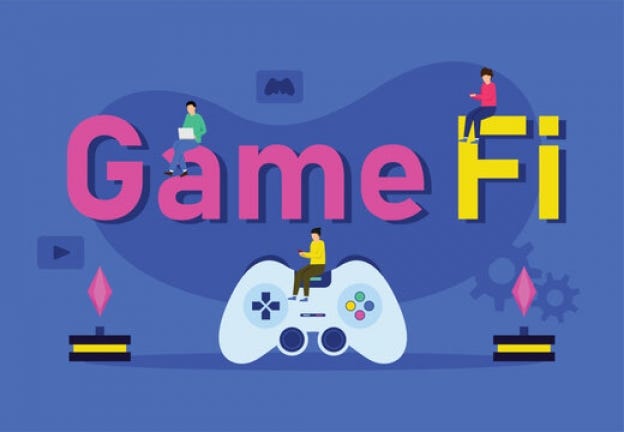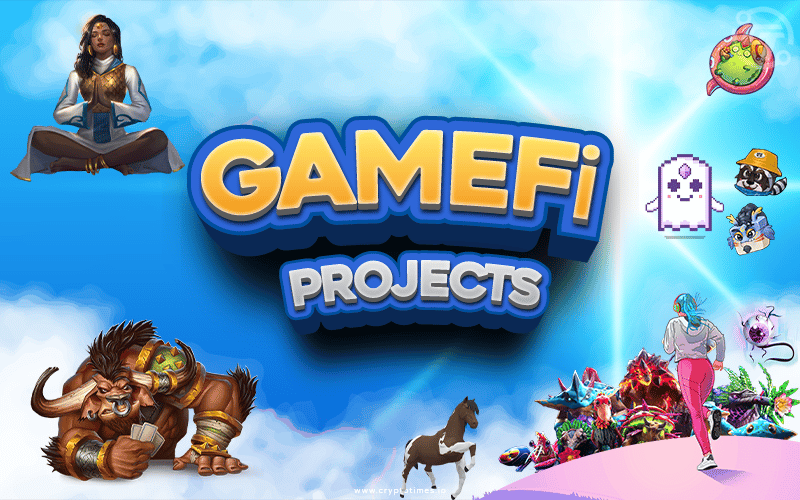The emergence of gamefi has significantly transformed the landscape of gaming and finance. Gamefi, a blend of gaming and decentralized finance (DeFi), leverages blockchain technology to create ecosystems where players can earn real-world value through their in-game activities. This innovative approach not only enhances user engagement but also opens up new avenues for monetization and investment opportunities. In this article, we will delve into the various facets of gamefi, exploring its impact on the gaming industry, the economics behind it, and its future potential.
Understanding Gamefi: A New Paradigm

Gamefi is more than just a trend; it represents a paradigm shift in how games are designed, played, and monetized. By incorporating DeFi principles, gamefi projects empower players to take ownership of their in-game assets, creating a virtual economy that reflects real-world financial systems. This section will explore the foundational elements of gamefi and how they interconnect to form a cohesive ecosystem.
The Convergence of Gaming and Finance

The traditional gaming model often leaves players with little to no control over their in-game assets. Gamefi disrupts this norm by allowing players to own digital assets through blockchain technology.
Ownership changes everything. Players are no longer mere consumers; they become stakeholders in the game’s success. This shift encourages player investment in game quality and longevity, as their time and resources contribute directly to the game’s economy.
Furthermore, gamefi introduces a tokenomics system where players can earn tokens by completing quests, participating in competitions, or simply engaging in the game. These tokens can be traded, sold, or used for in-game purchases, establishing a vibrant marketplace that mirrors traditional economies.
Key Components of Gamefi Ecosystems
To understand gamefi, one must explore its core components—blockchain, NFTs, and smart contracts.
Blockchain serves as the backbone of gamefi, ensuring transparency and security. Every transaction is recorded on a public ledger, providing players with verifiable proof of ownership over their digital assets.
Non-fungible tokens (NFTs) further enhance this experience by representing unique items within the game, from characters to rare collectibles. Each NFT is distinct and can carry significant value, depending on its rarity and demand within the community.
Smart contracts enable automated governance within these ecosystems. They ensure that transactions occur seamlessly without requiring third-party intervention, fostering trust among players. For instance, a smart contract can enforce rules about asset transfers, reducing the risk of fraud.
Gamefi’s Impact on Player Engagement
One of the most significant advantages of gamefi is its ability to boost player engagement. Traditional games often rely on in-game purchases to generate revenue, which can alienate users. In contrast, gamefi creates a rewarding environment where players feel incentivized to participate actively.
Players are more likely to commit time and resources to games that offer tangible rewards. This sense of ownership transforms casual players into dedicated enthusiasts who contribute to the game’s community and economy.
Additionally, competitive features such as leaderboard rankings, tournaments, and player-versus-player interactions enhance the gaming experience. Players are driven not only by personal achievement but also by the potential to earn valuable assets, making every session engaging and rewarding.
Gamefi Economics: Building Sustainable Models

Understanding the economic underpinnings of gamefi is crucial for evaluating its long-term viability. This section will analyze the economic models that support gamefi projects and consider the challenges they face.
Tokenomics: The Heart of Gamefi
Tokenomics lies at the core of any successful gamefi project. It refers to the economic structure governing the creation, distribution, and management of tokens within a game.
An effective tokenomics model ensures that supply and demand dynamics work in favor of both players and developers. Developers need to establish a balanced inflation rate to prevent excessive token devaluation, while players should have enough incentives to engage consistently with the game.
Moreover, staking mechanisms can encourage players to hold onto their tokens instead of selling them immediately. This promotes scarcity and increases the perceived value of tokens over time, benefiting both the players and the game developers.
Monetization Strategies for Developers
For many gamefi projects, finding sustainable monetization strategies is a critical aspect of success. Traditional games often rely on microtransactions and subscription fees, but gamefi presents novel approaches.
Developers can monetize their games through multiple avenues, including transaction fees on in-game trades, NFT sales, and partnerships with brands for exclusive content. By diversifying revenue streams, developers can reduce their reliance on any single source of income.
Furthermore, integrating advertising into gameplay can provide additional revenue while maintaining player experience. Ads can be incorporated naturally within the game or offered as optional content that players can interact with to earn rewards.
Challenges and Risks in Gamefi Economics
Despite its potential, gamefi faces several economic challenges. One primary concern is market volatility, particularly regarding token prices. As tokens fluctuate in value, players may hesitate to invest time or money into a game, fearing that their assets could lose considerable value.
Additionally, the regulatory landscape surrounding cryptocurrencies and blockchain technology is constantly evolving. Gamefi projects may find themselves navigating complex legalities as governments implement new regulations, impacting their operational capabilities.
Lastly, building and retaining a loyal user base can be challenging. Developers must continuously innovate and create fresh content to keep players engaged. Failure to do so can result in declining interest and player attrition, undermining the game’s economic framework.
The Future of Gamefi: Trends and Innovations

As gamefi continues to grow, several trends and innovations are shaping its future. This section will explore emerging technologies and concepts that promise to advance the gamefi landscape.
Integration of Virtual and Augmented Reality
Virtual reality (VR) and augmented reality (AR) are gaining traction in the gaming world, and their integration into gamefi could revolutionize player experiences.
By immersing players in fully realized 3D environments, VR can enhance gameplay and social interaction within gamefi ecosystems. Imagine players exploring virtual worlds, battling foes, and trading assets in real-time via immersive headsets. This could lead to deeper emotional connections with the game and fellow players.
Similarly, AR can bridge the gap between digital and physical realities. Players may interact with gamefi assets in their actual surroundings, creating unique experiences that blend the virtual and the real. This hybrid model could attract even more players, expanding gamefi’s audience.
Cross-Platform Play and Interoperability
Interoperability—the ability for different gamefi projects to connect and share assets—represents a significant opportunity for collaboration across the gaming sector.
Cross-platform play allows players to engage with their friends regardless of the device they use. This inclusivity fosters a vibrant community and encourages players to explore multiple gamefi titles.
Moreover, interoperability means players could potentially transfer assets between different games, maximizing the utility of their investments. For example, a character skin earned in one game could be utilized in another, creating a seamless experience and driving engagement across platforms.
Decentralized Autonomous Organizations
Decentralized Autonomous Organizations (DAOs) are reshaping governance structures in gamefi. DAOs allow players to have a say in the decision-making processes of the game, from development priorities to community initiatives.
By decentralizing governance, gamefi projects can enhance player investment and loyalty. When players feel their voices matter, they are more inclined to support the game financially and socially.
However, implementing a successful DAO requires balancing player input with efficient decision-making. Striking this balance is essential for maintaining a responsive and dynamic community that can adapt to challenges and opportunities.
FAQs

What is gamefi?
Gamefi combines gaming with decentralized finance, allowing players to earn real-world value through in-game activities. It utilizes blockchain technology to give players ownership of digital assets, transforming their engagement and investment in games.
How do players earn money in gamefi?
Players can earn money in gamefi by completing tasks, winning competitions, trading in-game assets, and participating in various activities that reward tokens. These tokens can be exchanged for cryptocurrencies or fiat currency, providing tangible financial benefits.
Are there risks associated with gamefi?
Yes, gamefi carries risks such as market volatility, regulatory challenges, and potential fraud. Players should conduct thorough research before investing in any gamefi project and consider the long-term sustainability of the game’s economy.
Can I trade my in-game assets?
Absolutely! In gamefi, players can trade their in-game assets like NFTs on various marketplaces. This creates a dynamic economy where the value of assets is determined by supply and demand.
What does the future hold for gamefi?
The future of gamefi appears promising, with trends like VR and AR integration, cross-platform play, and decentralized governance structures gaining momentum. These innovations will likely enhance player experiences and broaden the appeal of gamefi to a wider audience.
Conclusion

The rise of gamefi signifies a monumental shift in the gaming and finance industries. Its innovative approach empowers players, creating an environment where they can earn real-world value from their in-game efforts. Despite facing challenges, such as market volatility and regulatory scrutiny, the potential for gamefi to reshape the landscape of interactive entertainment remains undeniable. As emerging technologies continue to evolve, the possibilities for growth and enhancement within gamefi are boundless, making it an exciting space to watch in the years to come.
Khám phá thêm từ FINLAUNCH.NEWS
Đăng ký để nhận các bài đăng mới nhất được gửi đến email của bạn.
